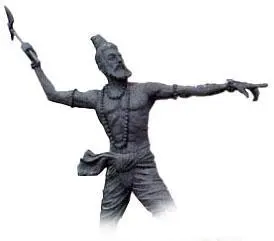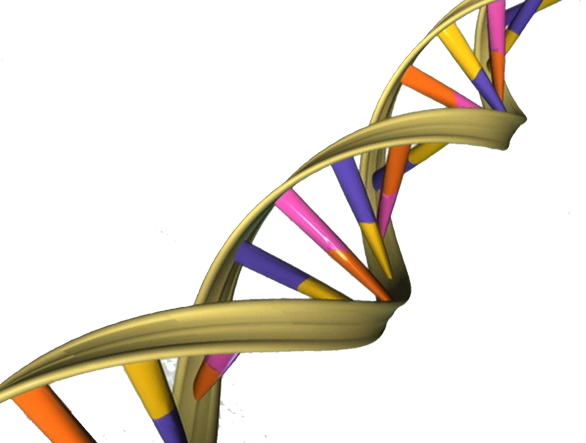Capital punishment is a sensitive question: is it allowable for the state to kill somebody? On a purely metaphoric level, most liberal people would say no. But would your answer still be the same if the convict was, say, a sex offender who raped and tortured a girl to death? More so, if she was known to you?
Is justice involving the taking of a human life, justified? Is killing by the state murder or justice? Is punishment justice or revenge? Is capital punishment a deterrent for crimes?
All difficult questions. Most of us shy away from these (I know I do!) – but they have to be asked all the same.
Meera does it, and much more, through the multiple-award-winning novel, “Aaraachaar” (meaning “executioner” – translated as “Hangwoman” into English). However, it is not a political polemic. While asking these questions, the story digs down into our psyche, to the subterranean depths where the archetypes lie.
And there the questions asked are much more basic and much more difficult. What does it mean to be a woman and a human being in today’s society?
There are no easy answers. Maybe, there are no answers, period… they are not required.
Because the question is what is important.
———————————–

Chetana Grddha Malik is a hangman’s daughter – and a potential hangwoman of the future, as he has no male heirs other than the disabled Ramu. Yatindranath Banerji is a convicted killer, waiting for the hangman’s noose – a hanging in which Chetana will assist her father, Phani Bhushan, as India’s first female executioner.
It would have been all business as usual had not the TV channels got hold of it. As with any controversial news item in contemporary India, Banerji’s hanging becomes a national spectacle, a chance to boost the TRP of the “reality” news channels. Sanjiv Kumar Mitra of the C.N.C is the first to sink his predatory teeth into this juicy situation – and also into the beautiful and desirable Chetana. He wants her to be the exclusive property of his channel on camera – and his, off it.
As the novel progresses and we move towards Yatindranath Banerji’s inevitable death, Sanjiv and Chetana dance around a complicated concoction of lust, filth, deceit and death. The ending, when it finally comes after 500+ pages is expected; yet fitting and devastating.
———————————–
Meera is a terrific writer. There is very little beauty in this novel; and there is a lot of ugliness. That she has made it so absorbing, so that one willfully endures so much unpleasantness is a tribute her skill as a wordsmith.
Chetana’s hovel is situated on Neem Tala Ghat, where people take their relatives to be cremated. The novel has endless descriptions of dead bodies and mourning relatives, narrated through her deadpan voice – interspersed with her father’s stories of his exploits as a hangman who has executed more than four hundred people. Among the people who are cremated, there are murder victims too: many of them young girls who have been raped, mutilated and murdered by sexual predators like Yatindranath Banerji. The narrative dances between two types of killing, one by the state and one by the social deviants. The narrator who is also the protagonist of the story does not take sides. It seems as though Chetana just wants us to see it as it is through her eyes, which has seen and absorbed a lot in twenty-three years.
Chetana’s home is also disturbingly full of the themes of pain and mutilation. Her brother Ramu is a practically a vegetable – his limbs have been hacked off by the father of a convict Phani Bhushan hanged. Phani Bhushan himself is a libertine, frequently visiting Kolkata’s red light district, Sona Gacchi. His brother, who stays with him is practically an invalid, having been marked by the excruciating torture he suffered as a communist under The Emergency. In this hell-house, the person Chetana is most attached to is her grandma, who is more than a century old – a crone-figure who tells stories from myth, legend and history.
The second theme is the “lust affair” (it would be dishonest to call it a love affair!) between Chetana and Sanjiv. The reporter makes no secret of his lust for her: the first time he sees Chetana, he tells her that :”I want to experience you at least once.” The second time, he squeezes her left breast. (This is highly symbolic, IMO. Kannagi, the heroine of Silappadikaram burns down Madhura by tearing off her left nipple and flinging it at the city. Later, she is enshrined as an incarnation of the Goddess Durga. But more on this later.) The significant thing is that Chetana also lusts for Sanjiv, and her left breast throbs every time she feels the hots.

Sanjiv Kumar Mitra – who is a kleptomaniac – needs Chetana physically as well as commercially. He wastes no time in buying her time exclusively for his channel, thus virtually “owning” her. He wastes no time in marketing her as well as the misery of the murderer’s and the victim’s family. He is a man without emotions, only lust – for riches, for fame and for pleasures of the flesh – and the hanging is only a studio production to raise the ratings for his channel. As his family history is revealed towards the end of the novel, we get an idea of what makes this complex creation tick.
Surprisingly, the ethics of capital punishment is not discussed openly. Rather, the author cleverly presents it as Q&A during Chetana’s TV show, her father’s bombastic speeches to journalists justifying it, and opinions of various characters, both pro and con. But the political subtext is very clear – and most effective, especially when various hangings from the stories told to her by her grandma are graphically described to us by Chetana.
But the most powerful theme is the undercurrent of frightening and bloodthirsty feminity which permeates the narrative – the punishing mother, the toothed vagina that men have sublimated through their myths and stories and either locked up as the madwoman in the attic or elevated to a pedestal as goddess. It is no accident that this novel is set in Bengal, I feel, as Durga’s fearsome dance of death is part of the Bengali psyche – and being from Kerala, a state where women’s mysteries still manifest as an undercurrent in many festivals (Thiruvathira being the prime example), the author can very well appreciate it.
Chetana can tie a hangman’s knot in seconds – she does that with her dupatta and uses it on would-be molesters to great effect. She feels connected to various legendary heroines of myth, legend and history, whether from her own family or otherwise, who had used the power of the eternal feminine on hapless males: the power of the soft seductress as well as that of the fierce Devi. It is no coincidence that the earth from the front yard of the courtesans of Sona Gacchi is used to make the idols of the goddess for Durga Puja.

———————————–
All the things described above makes this novel good. What makes it great is its structure.
India has a great tradition of storytelling. However, the structure of Indian stories and myths are not linear in the traditional sense. Starting with a central story, the narrative meanders through a twisted path with many byways – and many a time, the narrator takes detours. Sometimes even the byways have byways branching off them. It is quite common, by the end of the story, for the listener to be confused as to exactly where he is – but the bard keeps on singing, and ultimately reaches the end, tying up all the loose ends in the process.
The Katha Sarith Sagara and the Mahabharata are two well-known examples of the above technique. As one gets accustomed to the Indian timeless way of telling stories, one starts not getting disturbed by the detours. In fact, one starts to savour them, to relish them, to enjoy each sub-story which could be each made into an epic in its own right. In fact, many Mahabharata tales have become movies, novels and plays in various Indian languages.

This is the structure Meera adopts, and it is fascinating. I have seen criticisms of the novel saying that it should have been edited down – and I strongly disagree. Each of the chapters is an episode, as well as a stirring tale in its own right: and it is to be enjoyed as such. India cannot be rushed. So sit back in your chair, ladies and gentlemen, and travel along with this gorgeously terrifying executioner on the most terrifying and exhilarating journey of her life.
I guarantee that you will not regret it.
 I located a book (പരശുരാമൻ: ഒരു പഠനം – “Parasurama: A Study”) on Parasurama at the Kerala Sahitya Akademi bookstore this December. It was a serendipitous find! I never knew such an in-depth study existed.
I located a book (പരശുരാമൻ: ഒരു പഠനം – “Parasurama: A Study”) on Parasurama at the Kerala Sahitya Akademi bookstore this December. It was a serendipitous find! I never knew such an in-depth study existed.
 Another interesting piece of information is Renuka’s identification with Yellamma, a goddess of Karnataka who is now known as a patron of Devadasis, the traditional temple courtesan’s of India. But it seems that Yellamma was originally a goddess for women who wanted freedom from their abusive husbands, and also for those who wanted to live their lives as they liked, without being tied to domesticity. Another example of patriarchal subversion?)
Another interesting piece of information is Renuka’s identification with Yellamma, a goddess of Karnataka who is now known as a patron of Devadasis, the traditional temple courtesan’s of India. But it seems that Yellamma was originally a goddess for women who wanted freedom from their abusive husbands, and also for those who wanted to live their lives as they liked, without being tied to domesticity. Another example of patriarchal subversion?)



